- Home
- Clive Cussler
Dirk Pitt 22 - Poseidon's Arrow Page 34
Dirk Pitt 22 - Poseidon's Arrow Read online
Page 34
Dirk could see the ship pulling away and urged Summer to hurry. Pitt’s and Madrid’s arms ached from pulling the heavy line as Summer buried the throttle and took a bead on her brother. Dirk got on his belly and leaned over the side of the dock as the inflatable pulled alongside and Summer cut the motor. Pitt heaved the loop at the end of the line up and Dirk grabbed it just as the line went taut. Muscling it with all his might, he rolled the loop to his side, barely slipping it over the end of the bitt.
“Get clear in case it snaps,” Pitt yelled.
Dirk got to his feet and sprinted down the dock as Summer turned the inflatable around and followed. Suddenly the inflatable veered toward the Adelaide, and Dirk quickly saw why. Summer brought the boat alongside the dangling gangway and Pitt jumped up and grabbed it. Climbing hand over hand, he pulled himself up and boarded the ship.
The bowline was pulled taut, grabbing the ship by its nose and holding it in place. With its propeller still churning, the stern began swinging to starboard, threatening to lodge the ship crossways in the inlet. On the dock, the mooring bitt’s mounts strained under the pressure, fighting to hold the ship in place.
As the tug-of-war played out, Summer brought the inflatable alongside a dock ladder, where Dirk helped Madrid and the other injured men ashore. When Jorge, the last man, was transferred to the dock, Dirk jumped into the inflatable. “Run me over. I’ll back him up,” he shouted.
Summer gunned the throttle and shot to the side of the Adelaide, allowing Dirk to jump onto the dangling gangway.
“Be careful,” she shouted.
Dirk nodded. “Just get away from that line.”
Summer hurried back to the dock as a twang arose from the straining rope. Gomez had turned the rudder over and was applying full power against the line. Something had to give and finally it did.
The bowline’s threaded loop snapped at the mooring bitt, sending the line whipsawing toward the Adelaide. Clinging to the gangway, Dirk ducked as the line slapped against the hull, nearly taking his head off. As the loose line began to fall over him, he scrambled up the gangway and pulled himself onto the deck.
Free of its leash, the ship surged forward, angling out of the narrow inlet. Dirk scanned the deck for his father, but aside from the bodies of the two gunmen on the bow, the ship appeared empty. He eyed the bridge atop the rear superstructure and took off at a run across the long, open deck. He made it to a side door and was on the first steps of the companionway when gunfire erupted overhead.
Repeated bursts of gunfire sounded for nearly half a minute as Dirk raced up the stairs. When he reached the fourth level, the shooting fell silent, and he proceeded cautiously from there up to the bridge deck. He clutched the SIG Sauer at the ready as he crept onto the bridge.
He’d taken only a few steps past the door when a warm muzzle was jammed into the back of his neck. He froze in his tracks, but the barrel was quickly removed.
“I don’t remember giving you permission to come aboard.”
Dirk turned his head to find it was his father holding the gun, relief plastered on his face.
“I wasn’t aware you were the captain of this tub,” Dirk said.
“Apparently, I am now.” Pitt pointed across the bridge.
There was nothing but carnage around them. The bridge windows were shot out and the radar and navigation monitors shattered. Smoke from the decimated electronics filled the air with an acrid odor. In the far corner lay the bloodied body of Gomez.
“Gave him a chance, but he refused to take it.”
Dirk nodded, then glanced out the broken forward window of the pilotless ship. The Adelaide had nearly cleared the inlet, but a wall of rocks and mangroves blocked its path.
“There’re rocks ahead!” he said, jumping to the helm.
“They’re not real,” Pitt replied. “Part of the fake scenery to disguise the inlet.”
A few seconds later, the ship charged into the decoys. There was no jarring collision. Instead the Adelaide sailed smoothly through. Out the side window, Dirk saw an overturned Styrofoam rock gently float away.
Clear of the inlet, the Adelaide charged into the open waters of Gatun Lake. A large crane ship was crossing the canal to the north, while a pair of tankers and a containership were headed around a bend to the south. Pitt stepped to the helm and dialed up the ship’s throttle controls to full.
“Not going back for the others?” Dirk asked.
Pitt gave a steely gaze toward the containership vanishing around the channel ahead.
“No,” he said. “We have a ship to catch.”
71
BOLCKE STOOD PEERING OUT THE REAR BRIDGE WINDOW. Billows of black smoke from the site of his hidden facility painted the horizon. It was destroyed, he knew, because of the escaped prisoner, the one who had tossed the smoke grenade onto his front steps.
But Pablo was right. The money he would receive from selling the Sea Arrow’s technology would leave plenty for a new rare earth extraction facility. He had already done work at a site on Madagascar; he could safely expand his operations there. But he would lose precious months of trading activity at a critical time in the minerals market. Once he was safely in Colombia, he vowed, he would have Pablo hunt down the prisoner and bring him his head on a platter.
He faced forward as the Salzburg entered a narrow stretch of Gatun Lake called Gamboa Reach. “How much farther to the lock?”
Pablo turned from the helm. “It’s about twelve miles to Pedro Miguel.” He noted the angst on Bolcke’s face. “I’ve radioed ahead. The lock’s transit chief is expecting our passage. There will be no problems.”
The bridge radio blared with the voice of a tanker pilot castigating another ship for passing it on the lake. Bolcke and Pablo ignored the chatter as they eyed the Sea Arrow’s motor on the deck below, covered on the flatbed truck and concealed by stacked containers.
Two miles behind them, the tanker’s pilot still spouted venom at the large bulk carrier that had cut in front of him. “The maximum speed in this section of the canal is eight knots, jerk,” he radioed.
On the bridge of the Adelaide, Pitt couldn’t hear a word the man said, since the ship’s radio had been destroyed in his gun battle with Gomez. He didn’t even know his speed, as the navigation instruments were also demolished. But he had little doubt the ship was traveling well over eight knots.
Empty of all cargo and most of her fuel, the Adelaide sailed light on her feet. Pitt coaxed every ounce of speed he could from the ship, and soon had her approaching twenty knots. She left the tanker and its angry pilot in her wake as Pitt set his sights on the next vessel ahead. It was a large Dutch Panamax tanker, built to the original specs of the canal’s locks at nearly a thousand feet long.
The canal channel had narrowed even more as Pitt caught up to the Dutch ship and pulled up to its port flank to pass. The Adelaide had just edged alongside the tanker when a large blue containership appeared, sailing in the opposite direction.
Dirk gauged the distance needed to pass the tanker and shook his head. “No way we can get past her ahead of that containership.”
He expected his father to slow the ship and duck back behind the tanker until there was room to pass. Instead, Pitt stood calmly at the helm. He had no intention of slowing down.
Dirk grinned at his father and shook his head. “Those boys in that containership aren’t going to be happy.”
The pilot of the oncoming ship had already noticed the Adelaide in his lane and was making furious demands over the radio for the bulk carrier to back down. But the increasingly frantic calls went unanswered as the vessels converged.
Pitt continued to gain on the tanker, but its monstrous length made passing it an interminable task. Ahead, the tanker and containership had already passed bow to bow, so there was no escape for anyone. Pitt had estimated the canal cut was wide enough for the three ships to pass side by side, but he didn’t know if it was deep enough for all three. Positioned in the middle, where the channel would
be deepest, he didn’t really care.
The tanker’s pilot did what he could to slow his vessel and steer it to the right-hand side of the marked channel. But because his ship had the deepest draft, he refused to push it any closer to the bank. That left the game of chicken in the hands of the containership’s pilot.
Pitt helped the cause by pulling tight alongside the tanker, close enough that a man could jump from one vessel to the other. But, by all appearances, a collision looked inevitable.
As the containership bore down from the other direction, Pitt and Dirk braced for impact. The approaching ship, stacked to the sky with containers, filled their vision as its bow cut toward them. But the pilot wisely decided that grounding on the bank would be safer than a collision and he guided the ship aside to make way for Pitt.
The ships passed within a few feet of each other as the containership’s hull scraped bottom and its propeller churned through mud. The pilot and deck officers hurled a mountain of insults as the bridges of the two ships passed. Pitt merely smiled and waved.
“They’re going to want your pilot’s license for that,” Dirk said.
“Think how mad they’ll be,” Pitt replied, “when they find out I don’t have one.”
The channel turned and narrowed ahead, partially obscuring the outline of the Salzburg. Aboard her bridge, Bolcke and Pablo came alert at the latest burst of ire from the radio. When the blue containership had passed the Adelaide and the pilot saw the repainted name on her stern, he made further threats over the radio. “Labrador,” he said, “I will be filing a formal complaint with the canal authorities in Colón.”
Bolcke stiffened at mention of the ship’s name. “Labrador. That’s the name given to the hijacked vessel at our dock.” He grabbed a pair of binoculars and sprinted to the rear window. There was no mistaking the large bulk carrier a mile behind them, spurting past the Dutch tanker. It was the Adelaide.
His face turned pale. “They are chasing after us,” he said to Pablo.
Pablo calmly surveyed the navigation screen. “We should be able to pass safely into the locks ahead. If not,” he added, his eyes turning cold, “we’ll make them regret coming after us.”
72
THE TWO SHIPS HAD ENTERED THE GAILLARD CUT, the canal’s most dangerous section. Nine miles long, it sliced through the continental divide and had presented the most difficult challenge for the engineers who built the canal. A herculean excavation effort gouged out a trench more than two hundred fifty feet deep in some places, using manual labor and finicky steam shovels. Untold thousands lost their lives, some due to accidents and mudslides, but most from yellow fever and pneumonia.
The magnitude of the feat was obscured when the canal waters were released in 1914, flooding the deep cut. A tranquil appearance belied its tricky currents that made the narrow passage a challenge to navigate.
Pitt stormed into the cut, ignoring a channel marker that indicated a speed limit of six knots for large vessels. He occasionally felt the effects of the currents, as the stern drifted one way or another. But he refused to slow his pursuit. He had a clear bead on the Salzburg, having closed to within a half mile.
Though Pablo had ordered the captain to increase speed, it took precious time for the Salzburg to increase its pace. Peering back at the faster Adelaide, he realized he would have to take the offensive.
When Pitt noticed a few men congregating on the Salzburg’s forward deck, he passed the helm to Dirk.
“Just for the record,” Dirk said, “I’ve never piloted a vessel this size before.”
“She’s easier to handle than a Duesenberg,” Pitt said. “Just keep her off the bank. I’ll be right back.”
As they drew closer to the Salzburg, Dirk could see three men on her bow manipulating a tall object that looked like a large radar dish. The men rolled the dish alongside some shipping containers on the portside rail and positioned it so it aimed rearward—at the Adelaide.
Pitt appeared on the bridge a moment later. Dirk did a double take at seeing his father dressed in the reflective silver coating of a Level A hazardous materials protective suit. “What’s with the Buck Rogers outfit?”
“We brought them along for protection when we came aboard,” Pitt said. “Bolcke’s ships are outfitted with a microwave device called ADS that’s used for crowd control, only theirs is lethal. They likely have one aboard the Salzburg.”
Dirk pointed forward. “You mean that dish on their bow?”
Pitt saw the Active Denial System aimed directly at them and tossed Dirk an extra suit. “Quick, get this on.”
Dirk was starting to slip on the Hazmat suit when he felt a burning sensation on his back. “They must have it cranked up,” he said, quickly zipping the suit up.
Pitt felt the same sensation on his face and pulled on the matching hood with faceplate, and stepped to the helm.
“Stay behind the bulkhead,” he said to Dirk, his voice muffled by the hood.
He jammed the helm control to starboard, feeling a hot sensation on his chest and arms. Standing before the shattered bridge window, he was in the device’s direct line of fire. The Hazmat suit provided some protection but didn’t block the full effect.
Positioned on the Salzburg’s bow, the system had to fire along the ship’s port side to strike the Adelaide. Pitt could avoid the weapon’s beam by sailing to the far right of the channel and tucking in behind the leading ship. Within a few minutes, he did exactly that.
Bolcke watched as the Adelaide suddenly altered course. “She’s veering to the bank. I think you got her.”
“The operator reports he had a clear strike on the bridge,” Pablo said.
Then they saw the Adelaide straighten its heading. The pursuer still maintained a slight speed advantage and continued to creep closer to the Salzburg’s stern.
“I think they might try and ram us,” Bolcke said.
Pablo looked at the navigation monitor and saw they would soon be approaching the first set of locks at Pedro Miguel. “We need to dispose of them before we are in sight of the locks.” He had a few words with the captain, then departed the bridge.
Bolcke remained where he was, glued to the rear window, watching the pursuing vessel.
Pitt maintained a safe buffer with the ship ahead. He had hoped to pull alongside the Salzburg and force her into the bank, but the appearance of the ADS on the port rail had nixed that plan. He was contemplating his next move when the Salzburg heeled over in front of him.
At Pablo’s command, the captain had turned the Salzburg hard to port. The ADS operators immediately aimed the beam at the Adelaide’s bridge. Pitt felt the familiar tingle on his skin, but it was what he saw next to the weapon that made his hair stand on end. It was Pablo and another man at the rail, shouldering rocket-propelled grenade launchers. An instant later, they fired the weapons.
“Off the bridge!” Pitt yelled as the grenades flew toward them.
With no time to flee, he dove to the floor, kicking the rudder to port as he fell.
Standing across the bridge, Dirk jumped into the side companionway.
The first grenade struck the steel face of the Adelaide’s superstructure just beneath the bridge. It fell to the deck and discharged harmlessly atop a hatch cover.
Pablo had fired the second RPG, and his aim was on the mark. The grenade burst through the shattered window just above Pitt’s head. Its high angle of entry sent it careening off the ceiling to the rear bulkhead, where it detonated. The entire structure shook from the explosion, which incinerated the bridge in a fiery cloud of smoke and flame.
Watching from the deck of the Salzburg, Pablo smiled to himself. No man could have survived the inferno.
73
TWO THINGS SAVED PITT’S LIFE. FIRST WAS THE bounce of the grenade, which ricocheted off the rear bulkhead and detonated in front of an engineering console. The shrapnel blew up, around, and into the console—but not through it. Lying on the other side, Pitt was spared the lethal spray of exploding ste
el fragments.
His second salvation was the Hazmat suit. It shielded him from the flash fire that accompanied the explosion and engulfed the bridge. The blast rattled his senses, and he struggled to breathe, but he easily climbed to his feet once Dirk returned and dragged him clear of the carnage.
“Are you okay?” Dirk asked.
His ears ringing, Pitt barely heard the words. “Yes, thanks to Buck Rogers.”
Shaking off the effects of the blast, he staggered to a nearby window. “We should be about on her.” He had to yell to hear himself.
The words barely cleared his lips when a bang arose from the bow. Pitt and Dirk grabbed at the bulkhead as the ship shuddered to a halt.
Kicking the rudder to port when he fell had turned the Adelaide on an intercept course with the crossing Salzburg. Caught in the narrow channel, the Salzburg had to hold to its attempted U-turn and hope it could slip by the Adelaide. Pitt’s action had ensured it couldn’t.
Bolcke looked on in disbelief as the Adelaide, its bridge a charred ruin, turned toward them as if guided by an invisible hand. The Salzburg was halfway through her port turn when the Adelaide’s prow struck her amidships. Accompanied by the screech of steel grinding against steel, the charging bulk carrier cut nearly twenty feet into the Salzburg’s beam. Had the Salzburg been fully loaded, the pressure on her frame would have broken her in two. Still, the collision buckled hull plates all along her sides, allowing a rush of water to penetrate her interior.
On deck, the stacked cargo containers scattered like falling blocks. Several tumbled into the canal after smashing through the starboard rail. On the port rail side, a pair of the empty containers fell onto the ADS, flattening the dish and crushing its two operators. Pablo watched as another container rolled onto its side, pinning the leg of his fellow RPG launcher. The man screamed for Pablo to help, but there was nothing he could do, so he silently walked away.

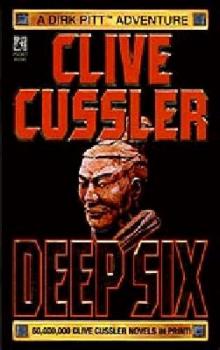 Deep Six
Deep Six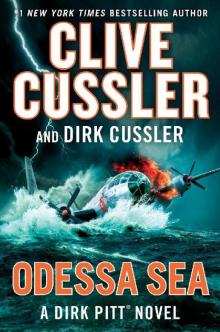 Odessa Sea
Odessa Sea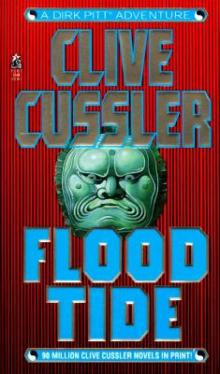 Flood Tide
Flood Tide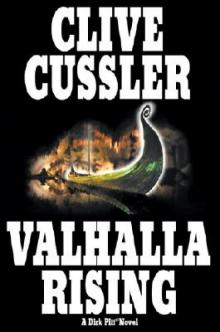 Valhalla Rising
Valhalla Rising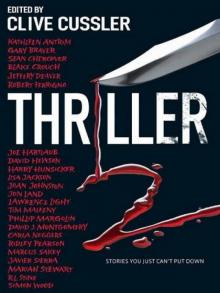 Thriller 2
Thriller 2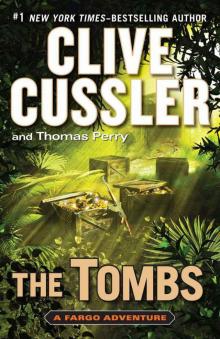 The Tombs
The Tombs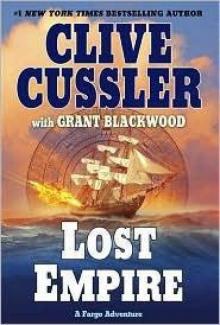 Lost Empire
Lost Empire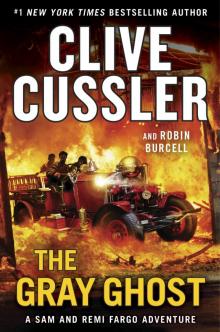 The Gray Ghost
The Gray Ghost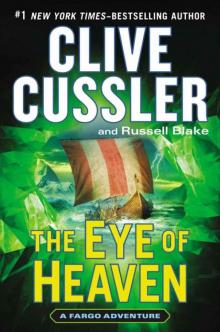 The Eye of Heaven
The Eye of Heaven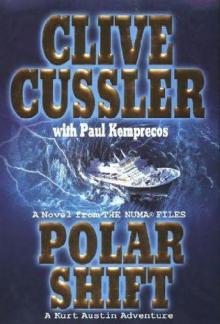 Polar Shift
Polar Shift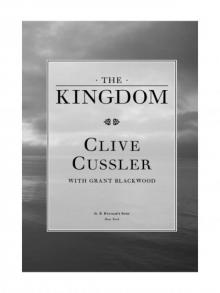 The Kingdom
The Kingdom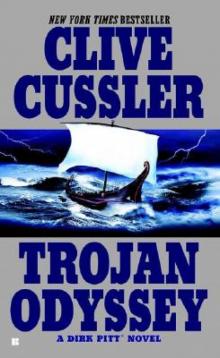 Trojan Odyssey
Trojan Odyssey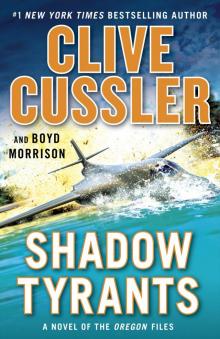 Shadow Tyrants
Shadow Tyrants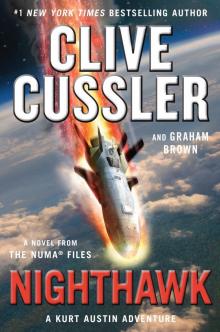 Nighthawk
Nighthawk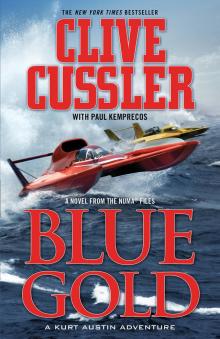 Blue Gold
Blue Gold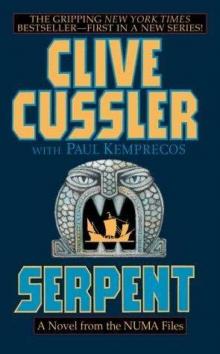 Serpent
Serpent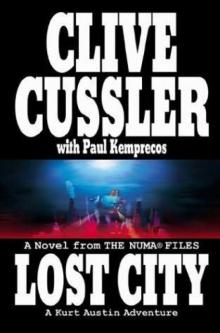 Lost City
Lost City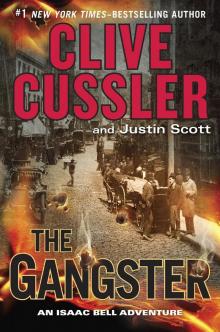 The Gangster
The Gangster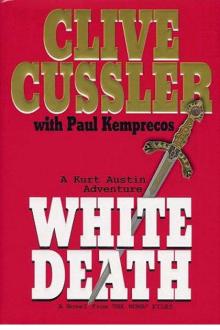 White Death
White Death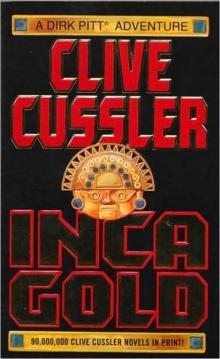 Inca Gold
Inca Gold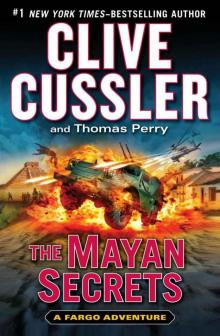 The Mayan Secrets
The Mayan Secrets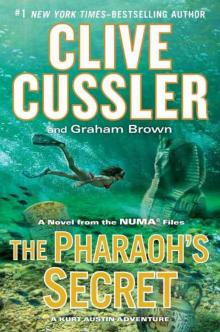 The Pharaoh's Secret
The Pharaoh's Secret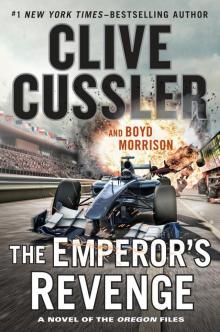 The Emperor's Revenge
The Emperor's Revenge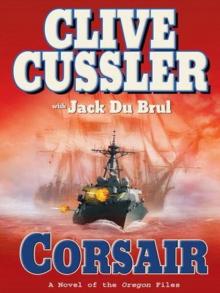 Corsair
Corsair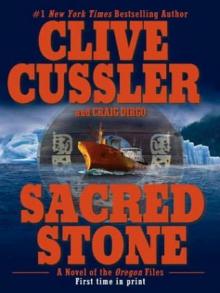 Sacred Stone
Sacred Stone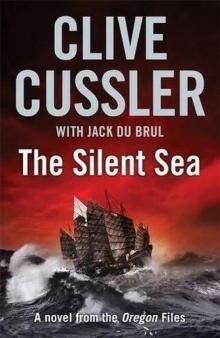 The Silent Sea
The Silent Sea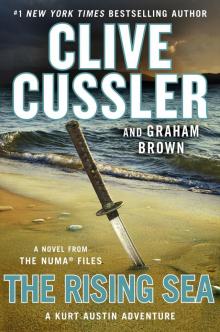 The Rising Sea
The Rising Sea Black Wind
Black Wind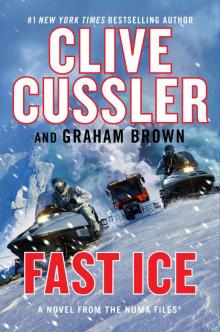 Fast Ice
Fast Ice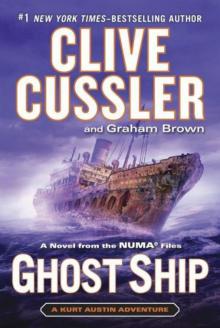 Ghost Ship
Ghost Ship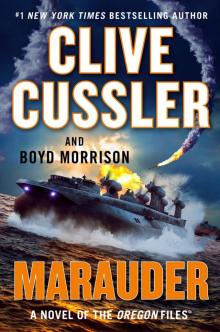 Marauder
Marauder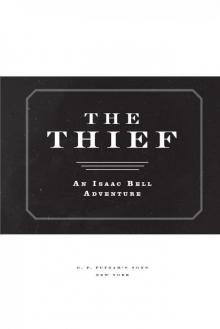 The Thief
The Thief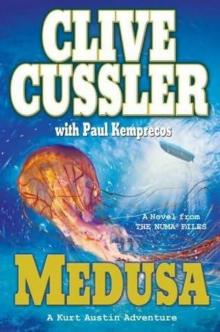 Medusa
Medusa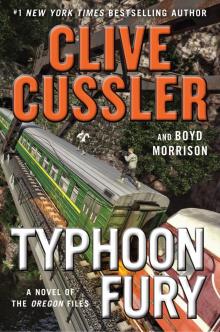 Typhoon Fury
Typhoon Fury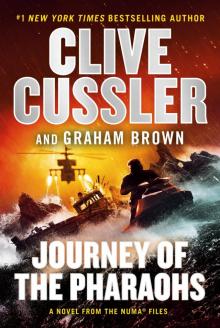 Journey of the Pharaohs
Journey of the Pharaohs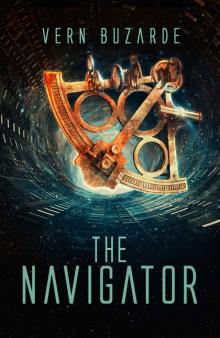 The Navigator
The Navigator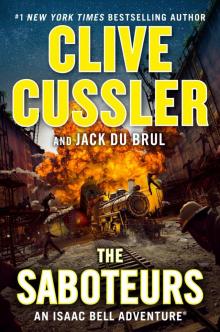 The Saboteurs
The Saboteurs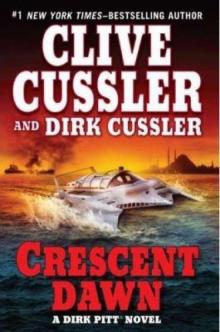 Crescent Dawn
Crescent Dawn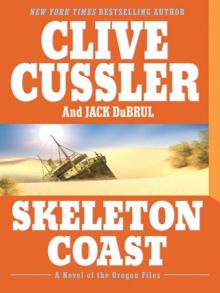 Skeleton Coast
Skeleton Coast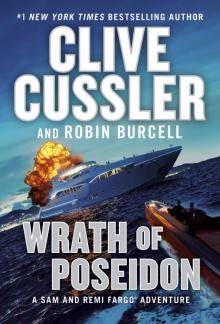 Wrath of Poseidon
Wrath of Poseidon The Mediterranean Caper
The Mediterranean Caper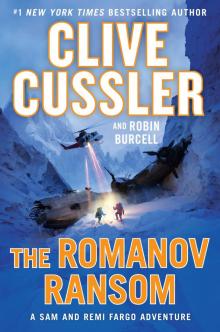 The Romanov Ransom
The Romanov Ransom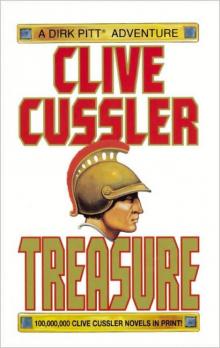 Treasure
Treasure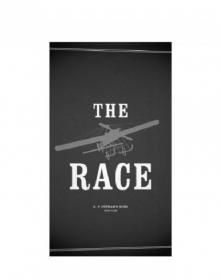 The Race
The Race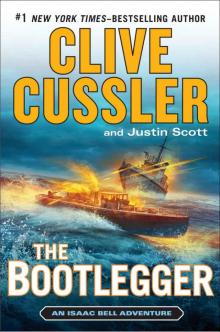 The Bootlegger
The Bootlegger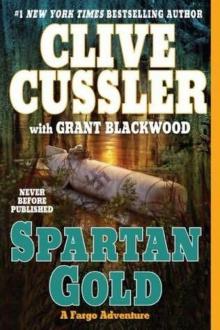 Spartan Gold
Spartan Gold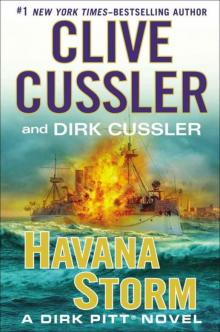 Havana Storm
Havana Storm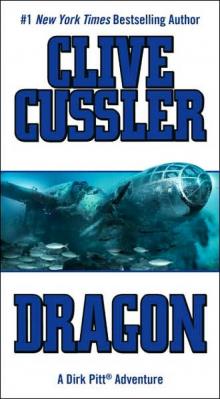 Dragon
Dragon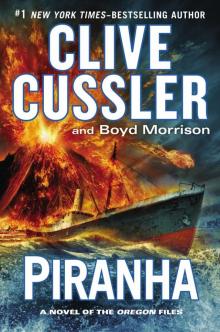 Piranha
Piranha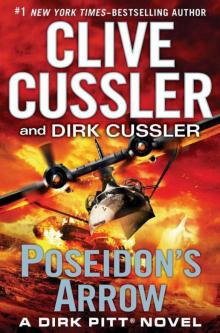 Poseidon's Arrow
Poseidon's Arrow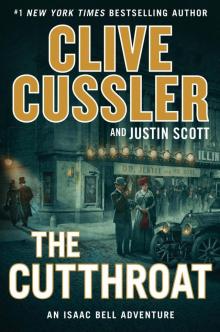 The Cutthroat
The Cutthroat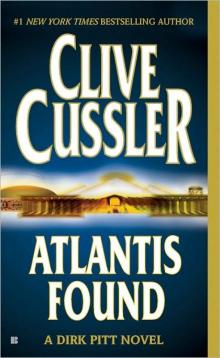 Atlantis Found
Atlantis Found The Jungle
The Jungle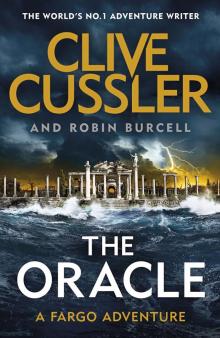 The Oracle
The Oracle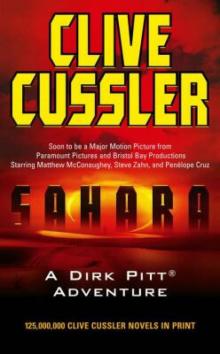 Treasure / Dragon / Sahara: Clive Cussler Gift Set
Treasure / Dragon / Sahara: Clive Cussler Gift Set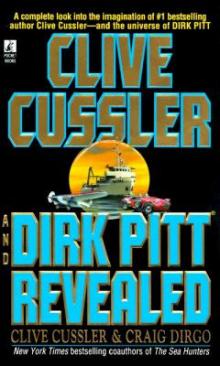 Clive Cussler and Dirk Pitt Revealed
Clive Cussler and Dirk Pitt Revealed The Sea Hunters
The Sea Hunters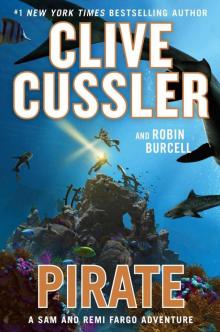 Pirate
Pirate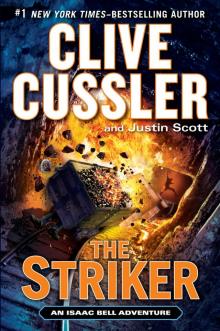 The Striker
The Striker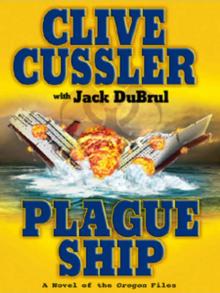 Plague Ship
Plague Ship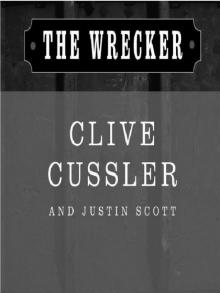 The Wrecker
The Wrecker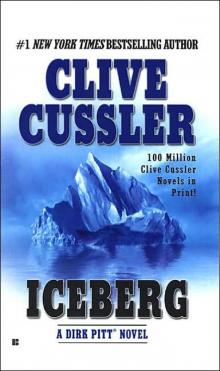 Iceberg
Iceberg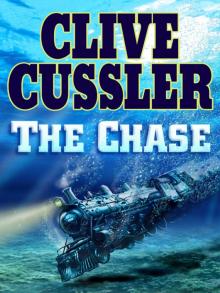 The Chase
The Chase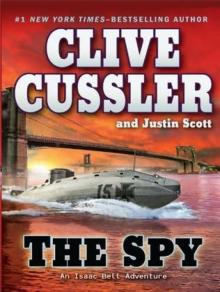 The Spy
The Spy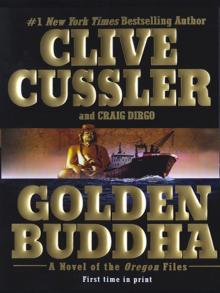 Golden Buddha
Golden Buddha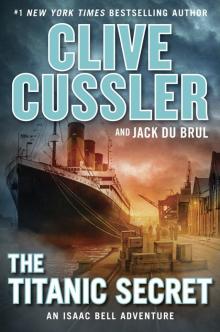 The Titanic Secret
The Titanic Secret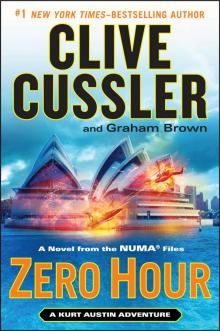 Zero Hour
Zero Hour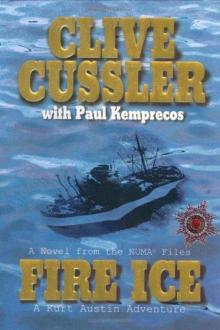 Fire Ice
Fire Ice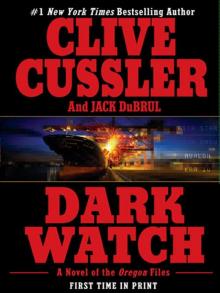 Dark Watch
Dark Watch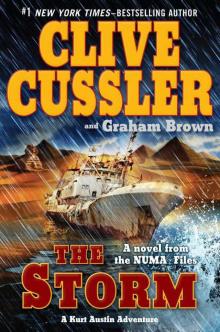 The Storm
The Storm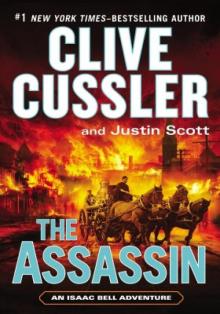 The Assassin
The Assassin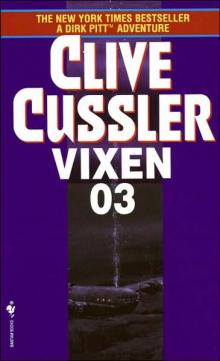 Vixen 03
Vixen 03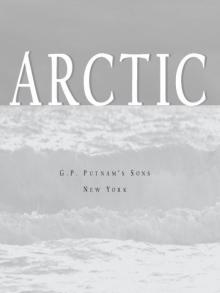 Arctic Drift
Arctic Drift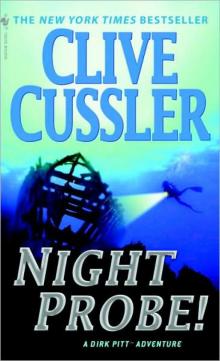 Night Probe!
Night Probe!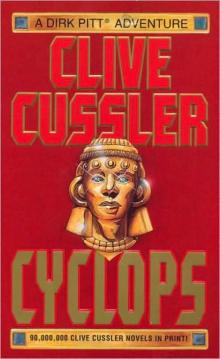 Cyclops
Cyclops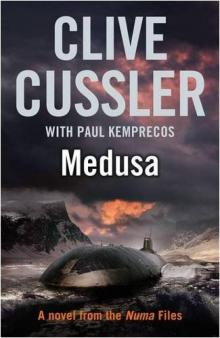 Medusa nf-8
Medusa nf-8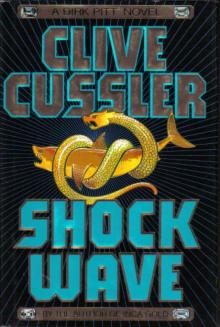 Shock Wave dp-13
Shock Wave dp-13 Marauder (The Oregon Files)
Marauder (The Oregon Files)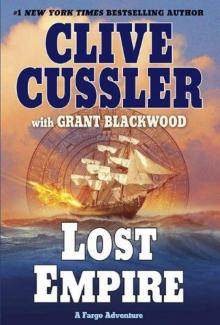 Lost Empire fa-2
Lost Empire fa-2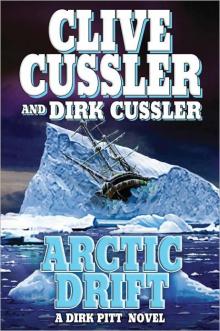 Arctic Drift dp-20
Arctic Drift dp-20 Dirk Pitt 22 - Poseidon's Arrow
Dirk Pitt 22 - Poseidon's Arrow Treasure of Khan dp-19
Treasure of Khan dp-19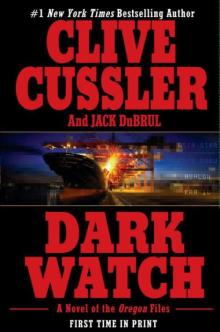 Dark Watch of-3
Dark Watch of-3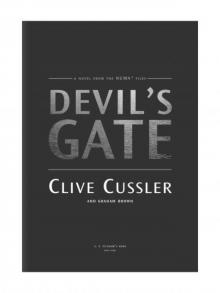 Devil's Gate
Devil's Gate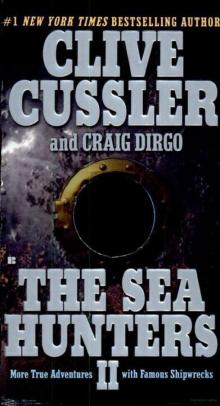 The Sea Hunters II: More True Adventures with Famous Shipwrecks
The Sea Hunters II: More True Adventures with Famous Shipwrecks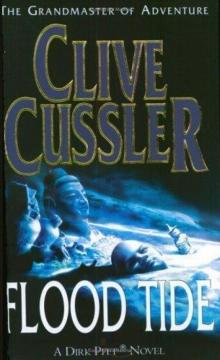 Flood Tide dp-14
Flood Tide dp-14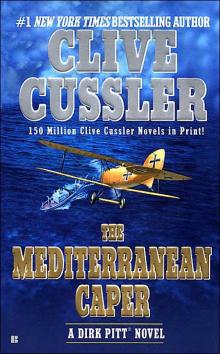 The Mediterranean Caper dp-2
The Mediterranean Caper dp-2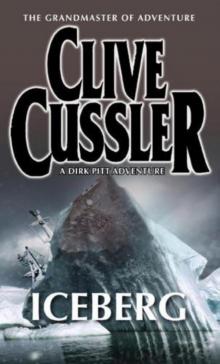 Iceberg dp-3
Iceberg dp-3 Sahara dpa-11
Sahara dpa-11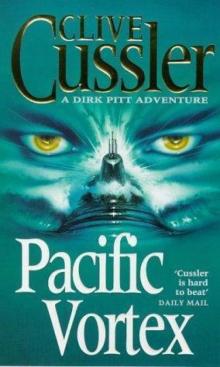 Pacific Vortex! dp-1
Pacific Vortex! dp-1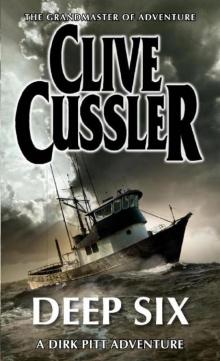 Deep Six dp-7
Deep Six dp-7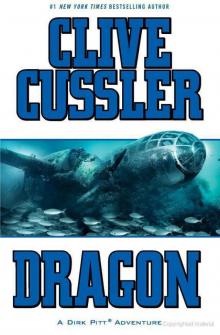 Dragon dp-10
Dragon dp-10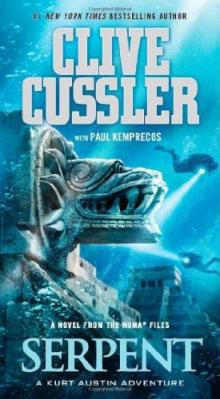 Serpent nf-1
Serpent nf-1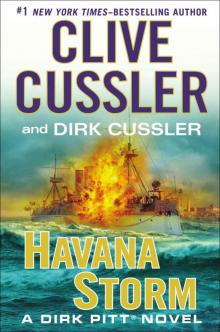 Havana Storm (Dirk Pitt Adventure)
Havana Storm (Dirk Pitt Adventure)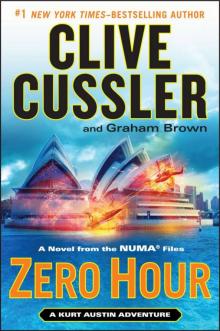 Zero Hour nf-11
Zero Hour nf-11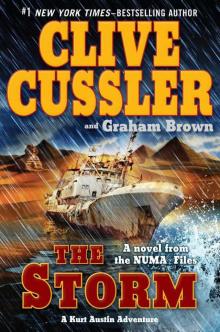 The Storm nf-10
The Storm nf-10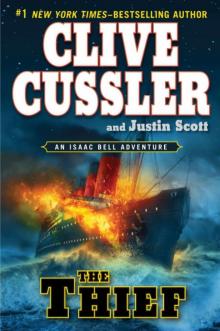 The Thief ib-5
The Thief ib-5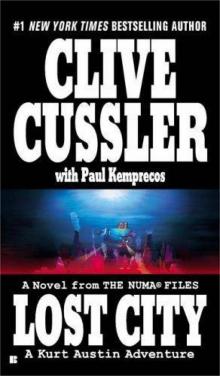 Lost City nf-5
Lost City nf-5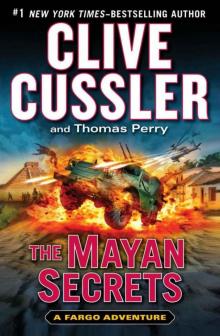 The Mayan Secrets fa-5
The Mayan Secrets fa-5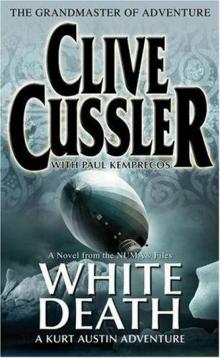 White Death nf-4
White Death nf-4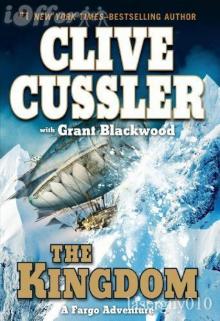 The Kingdom fa-3
The Kingdom fa-3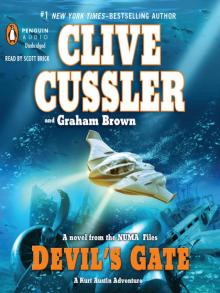 Devil's Gate nf-9
Devil's Gate nf-9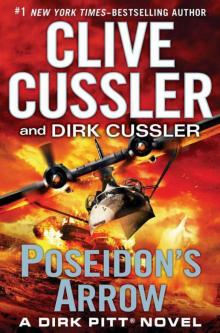 Poseidon's Arrow dp-22
Poseidon's Arrow dp-22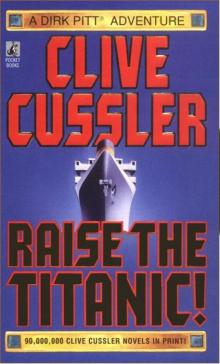 Raise the Titanic dp-4
Raise the Titanic dp-4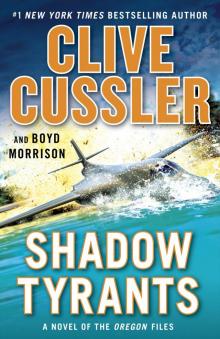 Shadow Tyrants--Clive Cussler
Shadow Tyrants--Clive Cussler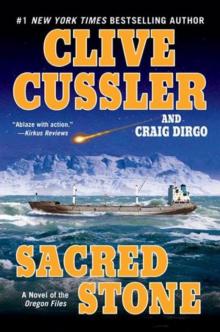 Sacred Stone of-2
Sacred Stone of-2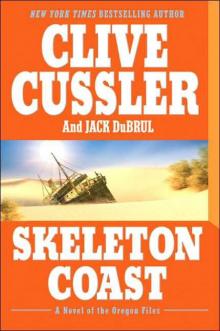 Skeleton Coast tof-4
Skeleton Coast tof-4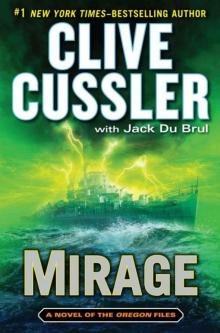 Mirage tof-9
Mirage tof-9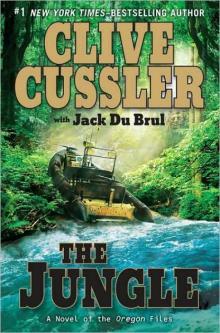 The Jungle of-8
The Jungle of-8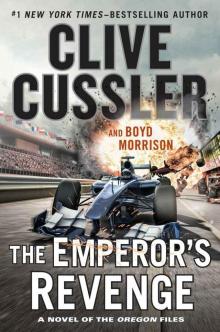 The Emperor's Revenge (The Oregon Files)
The Emperor's Revenge (The Oregon Files)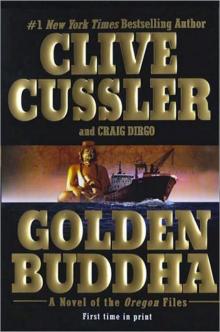 Golden Buddha of-1
Golden Buddha of-1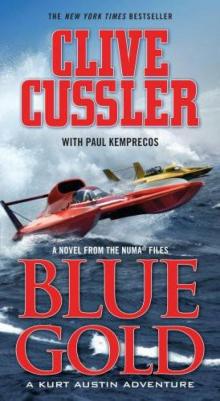 Blue & Gold
Blue & Gold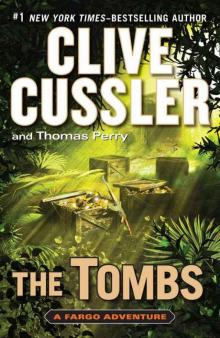 The Tombs fa-4
The Tombs fa-4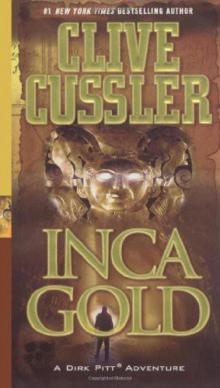 Inca Gold dp-12
Inca Gold dp-12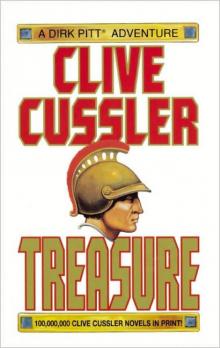 Treasure dp-9
Treasure dp-9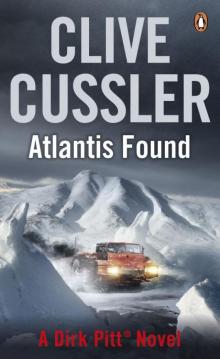 Atlantis Found dp-15
Atlantis Found dp-15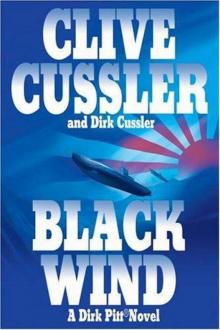 Black Wind dp-18
Black Wind dp-18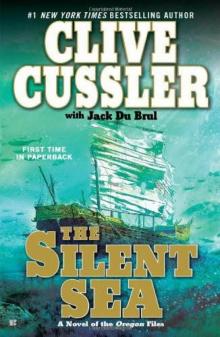 the Silent Sea (2010) tof-7
the Silent Sea (2010) tof-7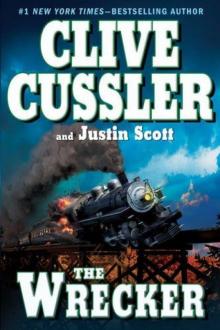 The Wrecker ib-2
The Wrecker ib-2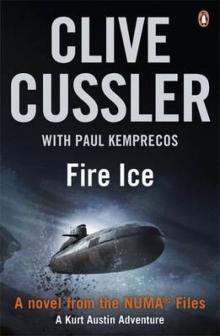 Fire Ice nf-3
Fire Ice nf-3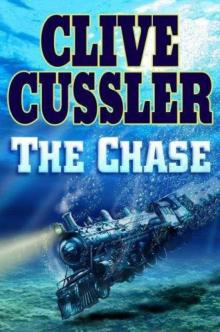 The Chase ib-1
The Chase ib-1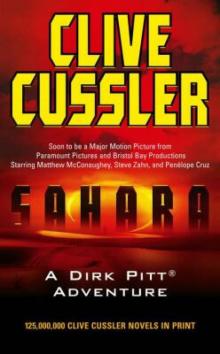 Sahara
Sahara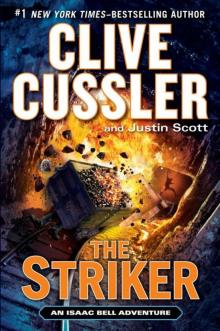 The Striker ib-6
The Striker ib-6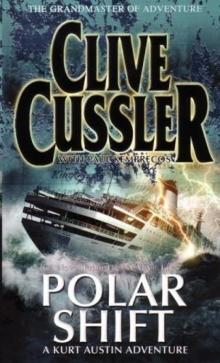 Polar Shift nf-6
Polar Shift nf-6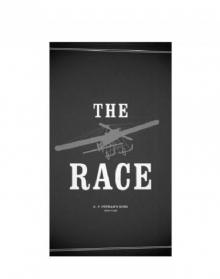 The Race ib-4
The Race ib-4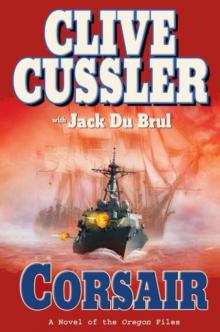 Corsair of-6
Corsair of-6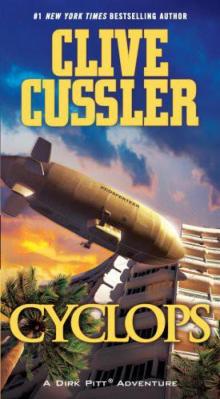 Cyclops dp-8
Cyclops dp-8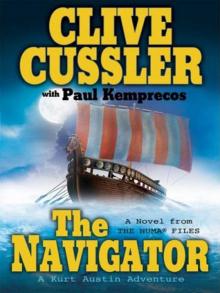 The Navigator nf-7
The Navigator nf-7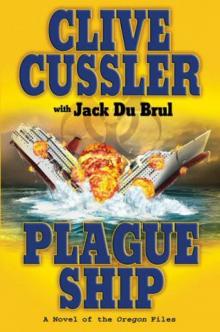 Plague Ship tof-5
Plague Ship tof-5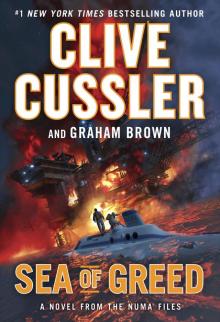 Sea of Greed
Sea of Greed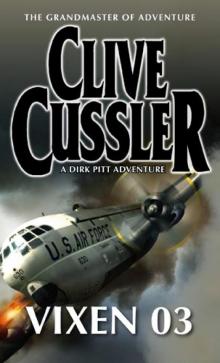 Vixen 03 dp-5
Vixen 03 dp-5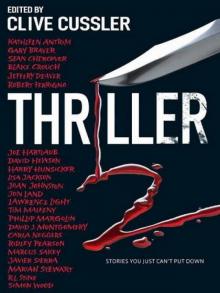 Thriller 2: Stories You Just Can't Put Down
Thriller 2: Stories You Just Can't Put Down